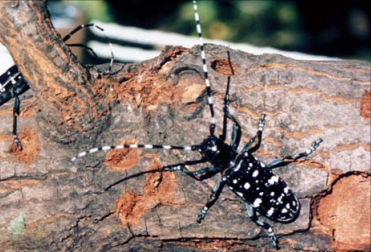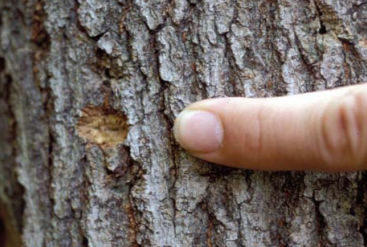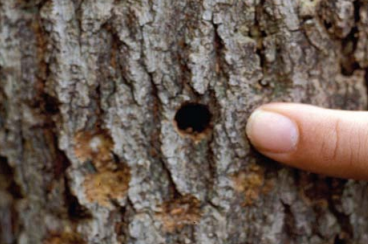Asian Long-Horned Beetle Alert
go.ncsu.edu/readext?717215
en Español / em Português
El inglés es el idioma de control de esta página. En la medida en que haya algún conflicto entre la traducción al inglés y la traducción, el inglés prevalece.
Al hacer clic en el enlace de traducción se activa un servicio de traducción gratuito para convertir la página al español. Al igual que con cualquier traducción por Internet, la conversión no es sensible al contexto y puede que no traduzca el texto en su significado original. NC State Extension no garantiza la exactitud del texto traducido. Por favor, tenga en cuenta que algunas aplicaciones y/o servicios pueden no funcionar como se espera cuando se traducen.
Português
Inglês é o idioma de controle desta página. Na medida que haja algum conflito entre o texto original em Inglês e a tradução, o Inglês prevalece.
Ao clicar no link de tradução, um serviço gratuito de tradução será ativado para converter a página para o Português. Como em qualquer tradução pela internet, a conversão não é sensivel ao contexto e pode não ocorrer a tradução para o significado orginal. O serviço de Extensão da Carolina do Norte (NC State Extension) não garante a exatidão do texto traduzido. Por favor, observe que algumas funções ou serviços podem não funcionar como esperado após a tradução.
English
English is the controlling language of this page. To the extent there is any conflict between the English text and the translation, English controls.
Clicking on the translation link activates a free translation service to convert the page to Spanish. As with any Internet translation, the conversion is not context-sensitive and may not translate the text to its original meaning. NC State Extension does not guarantee the accuracy of the translated text. Please note that some applications and/or services may not function as expected when translated.
Collapse ▲The Asian long-horned beetle (ALB) was discovered first in New York in 1996. Since this time, this destructive wood-boring pest has been attacking trees in the United States. The tunneling done by the beetle larvae girdles the stems and branches of these trees. Repeated attacks from the beetle lead to dieback of the tree crown and eventually, death of the tree. The pest is believed to have traveled from Asia inside wood packaging material. It is now found in five states.
The adult beetles are large, distinctive-looking insects measuring 1 to 1.5 inches in length with long antennae. Their bodies are black with small white spots, and their antennae are banded in black and white. Adult beetles are usually seen from July to October, but can be found later in the fall if temperatures are warm. Adults usually stay on the trees from which short distances to a new host to feed and reproduce. Each female usually lays 35-90 eggs during her lifetime. Some can lay more than that. The eggs hatch in 10-15 days. The larvae feed under the bark in the living tissue of the tree and then bore deep into the wood where they pupate. The adults emerge from pupation sites by boring a tunnel in the wood and creating a round exit hole in the tree. The ALB has one generation per year.

The adult Asian long-horned beetles are large, distinctive-looking insects measuring 1 to 1.5 inches in length with long antennae. Their bodies are black with small white spots, and their antennae are banded in black and white.
A complete list of host trees in the United States has not been determined. However, known trees the beetle prefers include maple spices (Acer spp.) including boxelder, Norway, red, silver and sugar maples. Other preferred hosts are birches, elms, willows, and horse chestnut. Rare tree hosts include ashes, European mountain ash, London planetree, mimosa, and poplars.

Oval to round pits in the bark. These egg-laying sites or niches are chewed out by the female beetle, and a single egg is deposited in each niche.

Round holes, 3/8 inch in diameter or larger, on the trunk and on branches. These exit holes are made by adult beetles as they emerge from the tree.
Currently, the only effective means to eliminate ALB is to remove infested trees and destroy them by chipping or burning. To prevent further spread of the insect, quarantines are established to avoid transporting the pest. Check trees regularly for this insect and look for the damage it causes. The United States Department of Agriculture requests that any sightings of the insect be reported. These reports can be made at “Report It.”
For more information about the Asian long-horned beetle in the United States, visit the U.S. Forest Service website.




